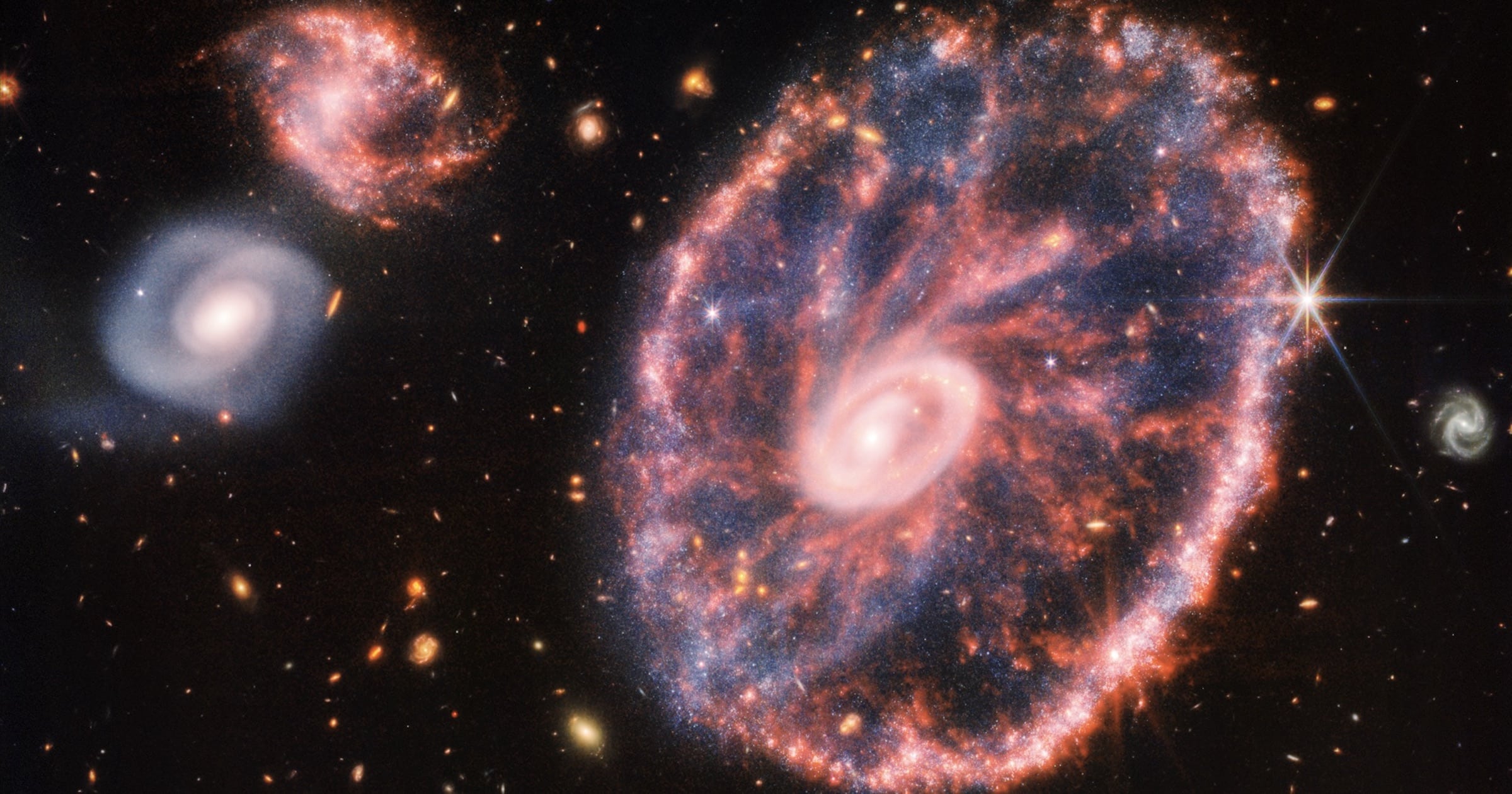 Faith & Science
Faith & Science
 Physics, Earth & Space
Physics, Earth & Space
Meyer: Webb Telescope Confirms a Cosmic Beginning

One of the three pillars of Stephen Meyer’s “God Hypothesis” argument is the fact that the universe had a beginning a finite time ago. Or is it a fact? A physics researcher, Eric Lerner, won himself some big media time recently with the claim that images from the new James Webb Space Telescope (JWST) were casting serious doubt on the Big Bang. The images showed far too many fully formed galaxies too soon after the universe began, according to the Big Bang theory. Did this hint that the universe, in fact, had no beginning, at least as we understand that?
Writing at The Daily Wire, Dr. Meyer examines Lerner’s case and explains what’s wrong with it. The question has to do with red-shifted (i.e., stretched out) radiation and so-called “tired light.”
If the JWST were to detect “uber” red shifted radiation coming from extremely ancient, distant galaxies, that would provide additional confirmation that the universe has expanded as much as the Big Bang theory predicts.
So has the JWST detected such radiation? It has. In fact, there would be no extremely distant galaxies to analyze had the JWST not detected long wavelength infrared radiation coming from them. Remember the JWST was specifically designed to detect such infrared radiation. Thus, the fact that it has been able to produce images of extremely distant galaxies shows that it has collected the kind of radiation astronomers would expect if the universe is expanding as the Big Bang theory affirms.
Lerner mentions none of this. Instead, he highlights surprising discoveries about how many galaxies had formed in those remote periods in cosmic history. He argues that, given current theory, we should not expect to see so many galaxies so early.
Perhaps. But the evidence he cites challenges models of galaxy formation, not an expanding universe or the Big Bang.
Interestingly, Lerner acknowledges that the JWST has detected extremely red-shifted radiation. But he explains this away with something called the “tired-light hypothesis.” He acknowledges that wavelengths increase with distance but denies the expansion of space produces that elongation. Instead, he asserts light stretches out as it loses energy in transit.
Yet the tired-light hypothesis has been discredited. No known mechanism degrades the energy of a photon of light without changing its direction and momentum. But any such change would cause images of the object emitting the photon to blur. That blurring has not been observed.
Lerner’s arguments have also been rejected because of other astronomical evidence — the observed abundance of light elements and the famed “Cosmic Background Radiation” — that the Big Bang model explains uniquely well. [Emphasis added.]
“In the Beginning…”
In Return of the Hypothesis, Meyer recounts why scientists, even Einstein, resisted the Big Bang as it was formulated initially by Georges Lemaître. The philosophical stakes were just too enormous. Materialism could not accept so massive a confirmation of Genesis 1:1: “In the beginning…”
Because of this, even as Lerner’s bid for publicity will be a thing of the past soon enough, you can be sure that an atmosphere of nervousness about cosmology and what it teaches will persist. Just in the past month, physicist Sabine Hossenfelder asked, “Did the Big Bang happen?” (Her answer: We can’t know how the universe originated, if it did.) And Scientific American proclaimed, without a mention of Lerner, “JWST’s First Glimpses of Early Galaxies Could Break Cosmology.” These are challenges that are NOT going away.
